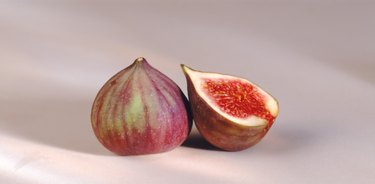
Ficus trees are indigenous to Asia and are grown extensively in the Mediterranean. They thrive in semi-arid, warm climates. Many Ficus produce figs. The trees can reach 50 feet in height but are more commonly kept to 30 feet. Ficus grow well in pots and tolerate diverse soils. Of the more than 800 species of Ficus, the smaller trees are appropriate for indoor growing (such as Ficus benjamina). Outside figs require temperatures above 30 degrees. The USDA hardiness zones for Arizona run from 5 to 9 and represent areas that are appropriate for Ficus and areas where they would need to be protected from cold.
Step 1
Choose a location where there is bright morning light but some shade in the heat of the day. Direct Arizona summer sun is too bright at midday and will burn the tender leaves. Spread 2 inches of compost and 1 inch of sand over the surface of the soil and dig it in 6 to 8 inches. This will provide excellent drainage through the sand and extra nutrition from the compost.
Video of the Day
Step 2
Remove the Ficus from the nursery pot and gently pull out the roots. Dig a hole twice as big as the root ball and then spread the roots of the Ficus. Backfill with the dirt you removed, packing it around the roots. Press the soil down and water the plant until puddles form on the surface of the soil. This heavy watering will help remove any air pockets around the roots.
Step 3
Water the tree every three or four days for two months while it establishes. After that, water it when the leaves look limp. In the hottest season in Arizona this will be at least once each week. Water the equivalent of 1 inch of rain each time. You can set a cup or dish next to the tree to measure the accrual as you water.
Step 4
Fertilize the tree annually in spring with a balanced fertilizer applied at the rate the manufacturer recommends. In Arizona you should fertilize in March. In four to five years, fertilize it with a high phosphorus fertilizer to encourage the fruit. The 5-10-5 high phosphorus fertilizer boosts the phosphorus and reduces the nitrogen, which forces green leafy growth.
Step 5
Cover the tree when freezing temperatures persist. Arizona occasionally has cold snaps in winter, and extended cold can harm the plant even though Ficus carica is the most cold-hardy fig tree. It can handle subzero temperatures, but the plant may die to the ground and have to start over in the spring. Place a blanket or burlap over the tree during freezing nights and remove it in the daytime so the tree can get sunlight.
Video of the Day